Variety Effects
Introduction
An important possible adaptation to climate change effects is to plant newer varieties that may be more resilient to heat and shorter rainy seasons. A comparison is shown between the simulated yield of Supa, a commonly grown variety that is known for it good taste and aroma, and an improved variety known as TXD-85.
Current
The yield of Supa compared to TXD-85 is relatively large during the rainy season, particularly in higher-potential rice growing areas of Kilombero and east of the Highlands. Where yields are constrained by cold, there is little benefit to the improved variety.
Future - 2050
The difference in yield between the two varieties remains in the future, again with the higher potential zones benefiting the most. Indeed, in the future, the additional yield provided by the improved variety is higher than under current climatic conditions.
Change
The results of the change in yield produced by the two varieties between 2000 and 2050 indicates that TXD-85 yield will be more affected by climate change than Supa. In other words, TXD-85 yield will decline more throughout the lowlands as temperatures warms and precipitation doesn't increase. The Supa yield doesn't change as much because it’s potential is lower. However, it should be remembered that in 2050, TXD-85 yield is still higher than Supa yield.
Comparison
These maps have a slider. When you move the large red dot left and right, you can compare rice yields in 2000 (called WorldClim) and 2050 (called by the name of the GCM). For example, you can see how the area with the lowest yield, in blue shrinks as the temperature in the Highlands warms. You can also see how the yield in the warmest zone in the east declines as temperatures rise too high for rice.
Supa
-OK/Ruf_Rice_Supa_100kgN_WClim_Dec-YLD.jpg) Current
Current
-OK/Ruf_CCSM4_Supa_Dec.jpg)
TXD-85
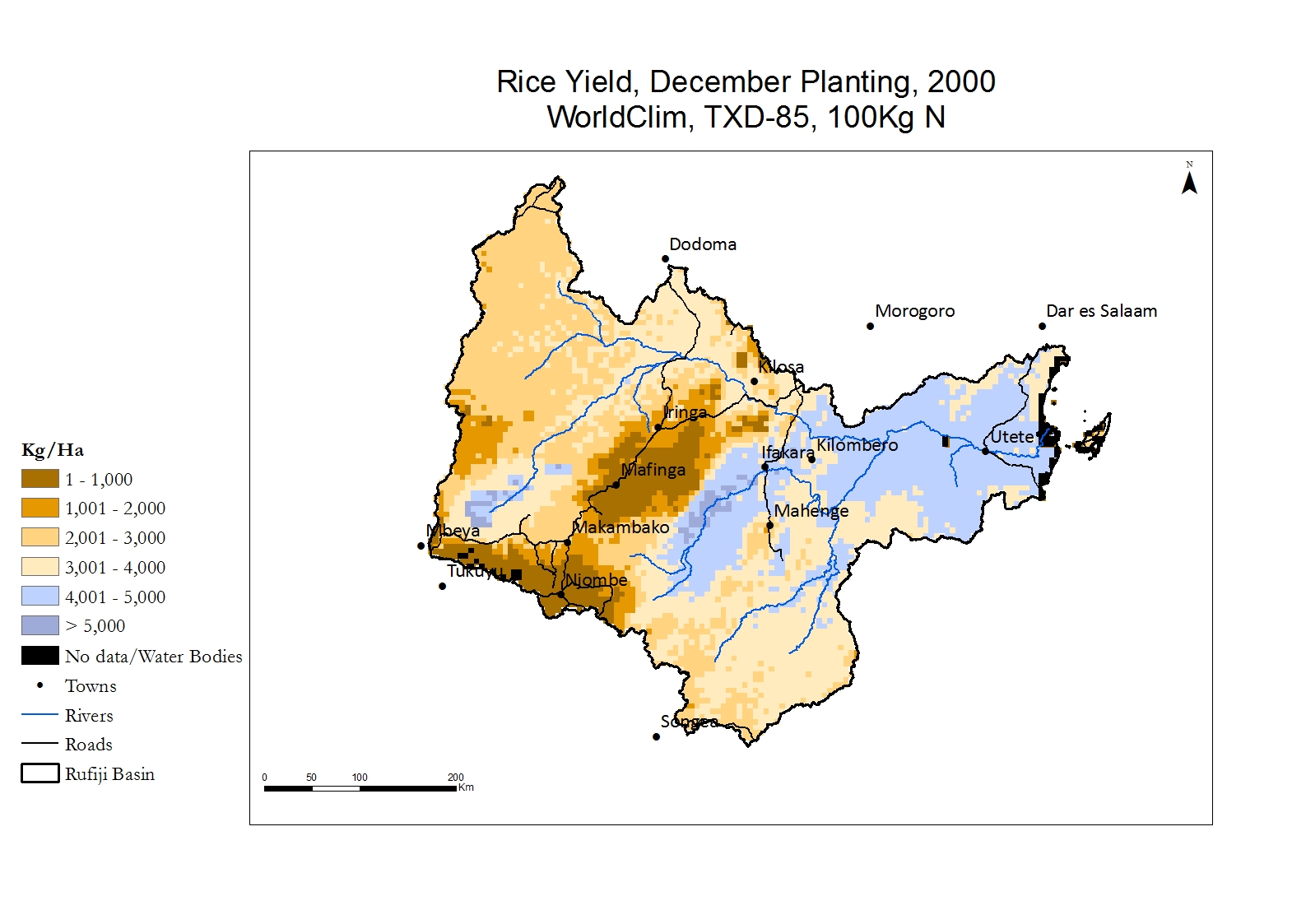 Current
Current
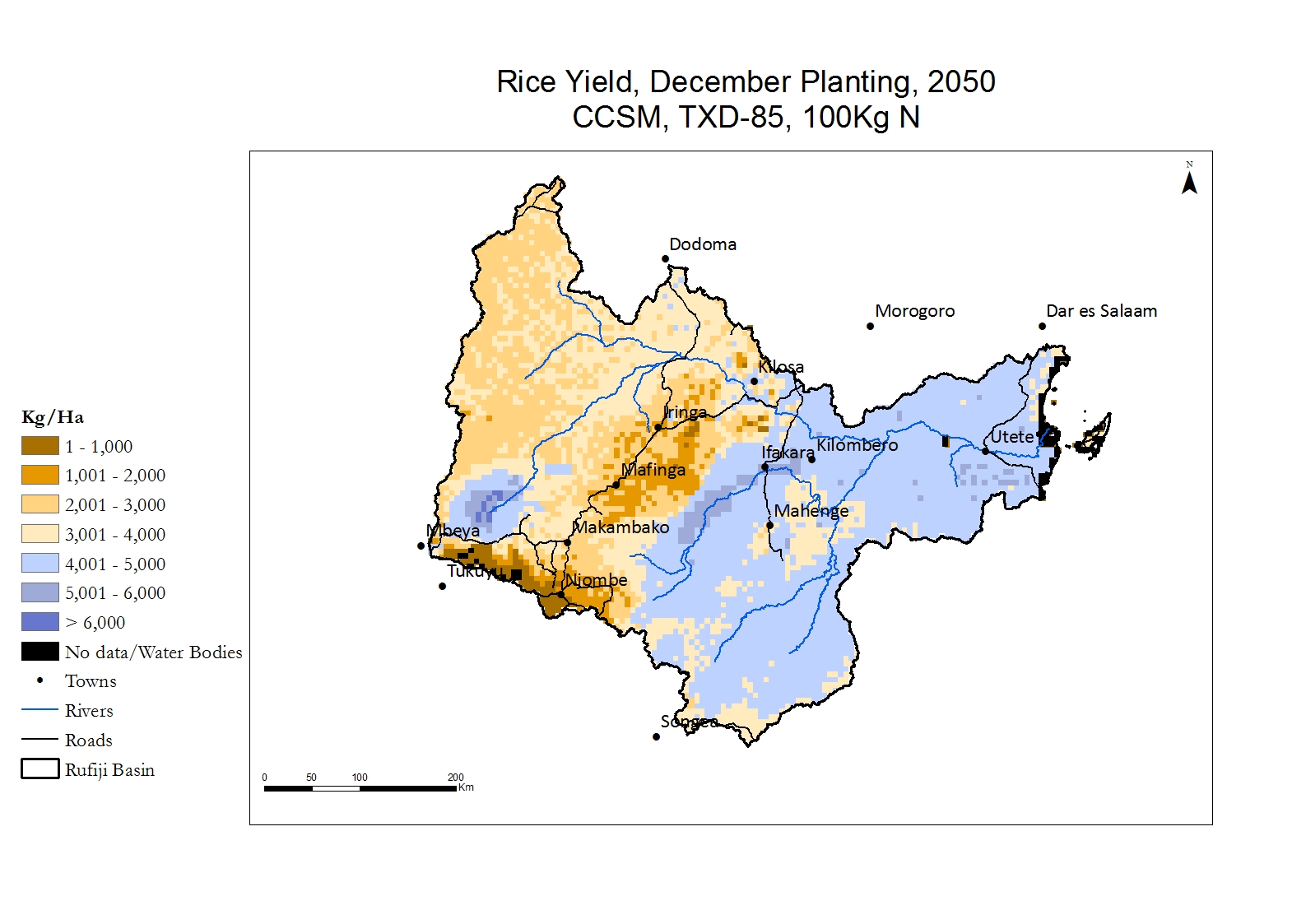
Supa
-OK/Ruf_MPI_Supa-Dec.jpg)
-OK/Ruf_Rice_Supa_100kgN_WClim_Dec-YLD.jpg) Current
Current
TXD-85
 Current
Current
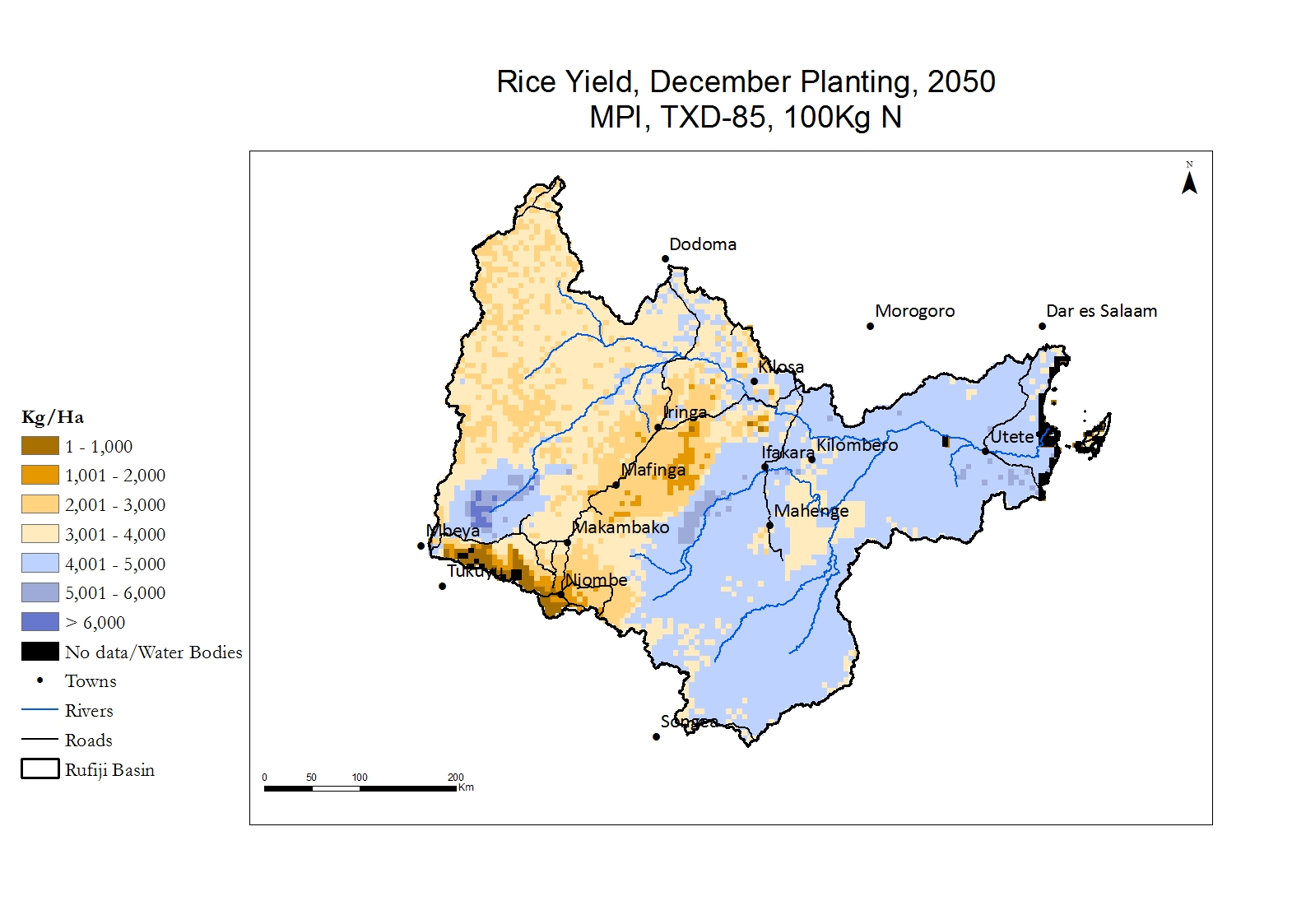
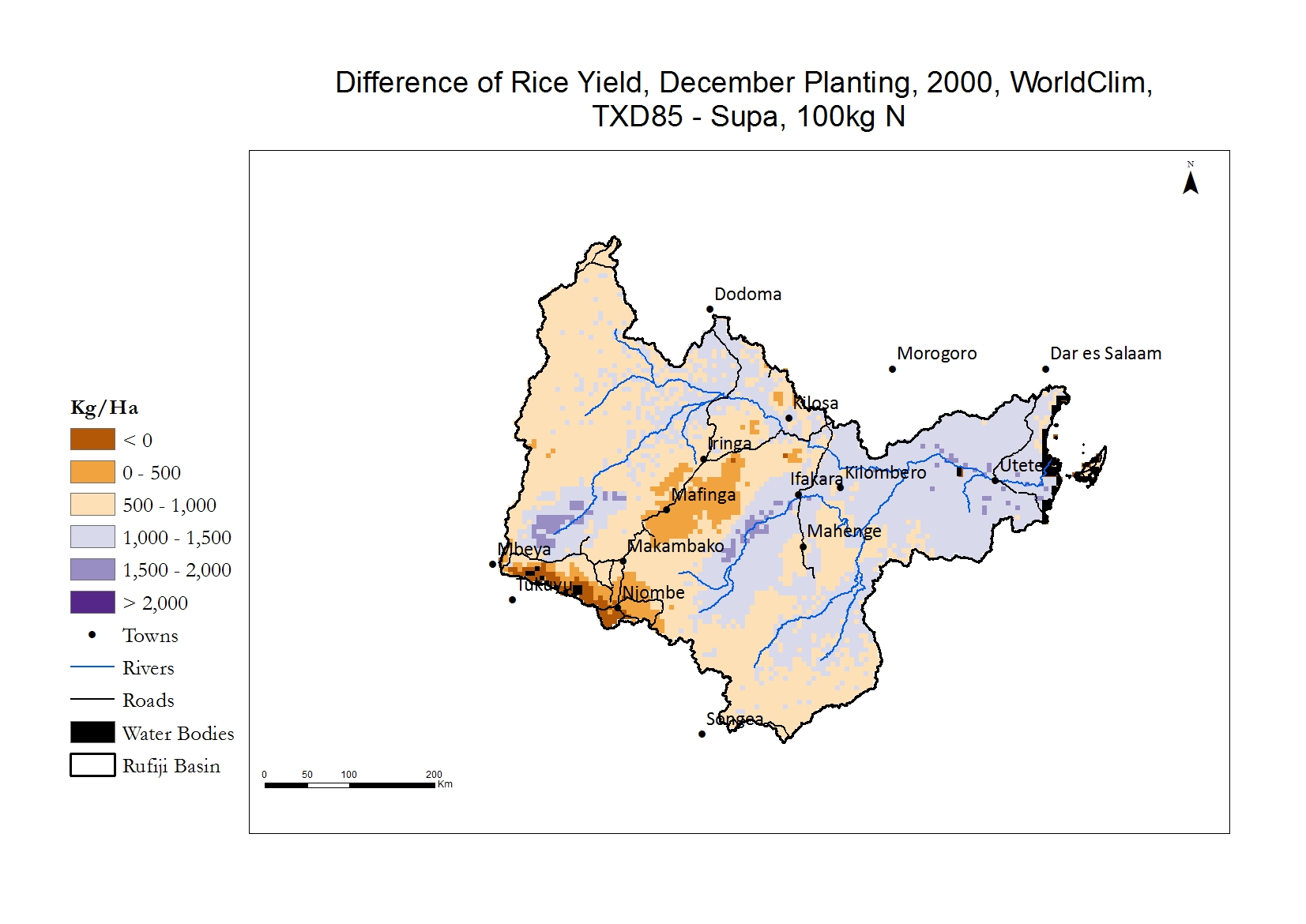
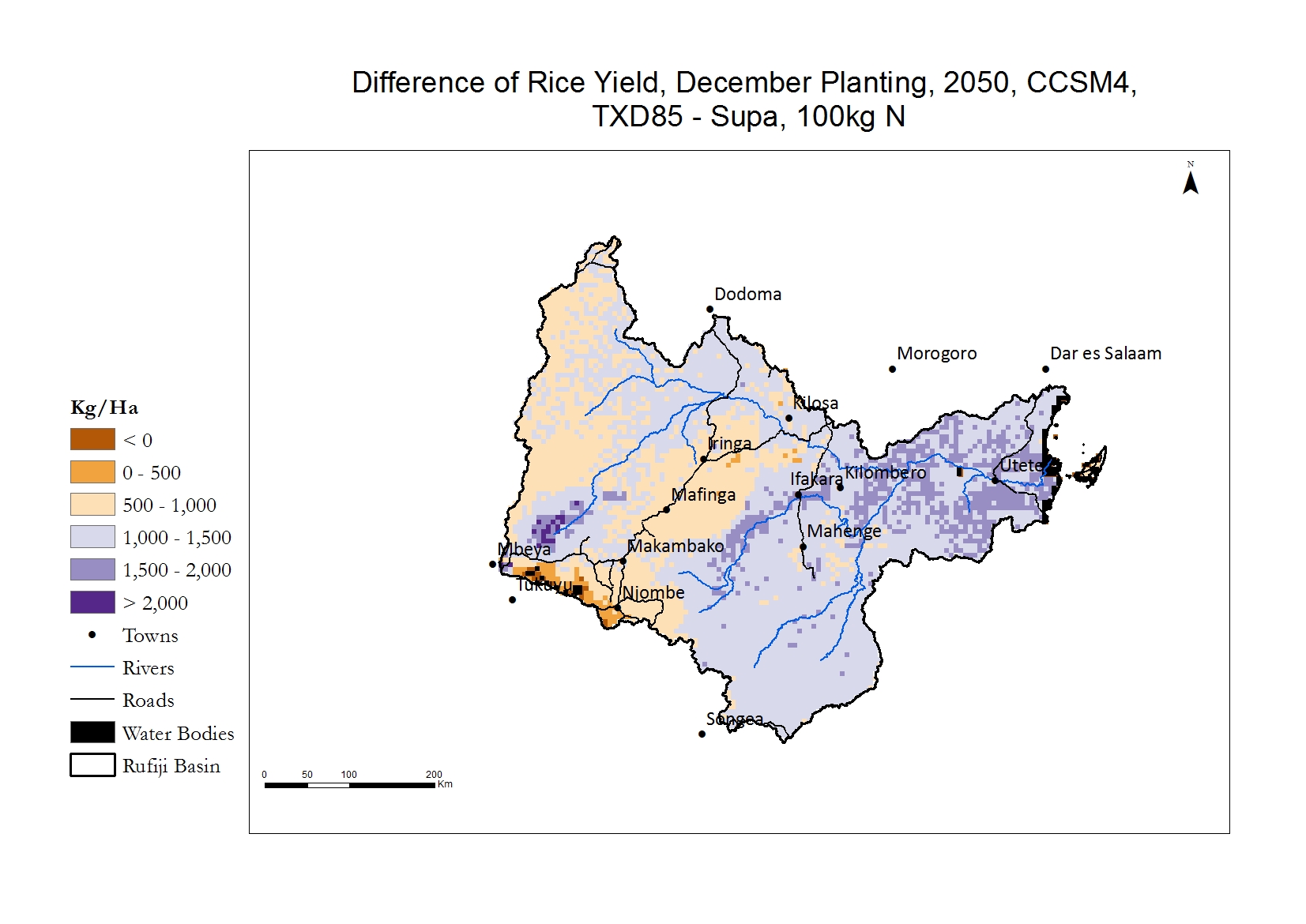
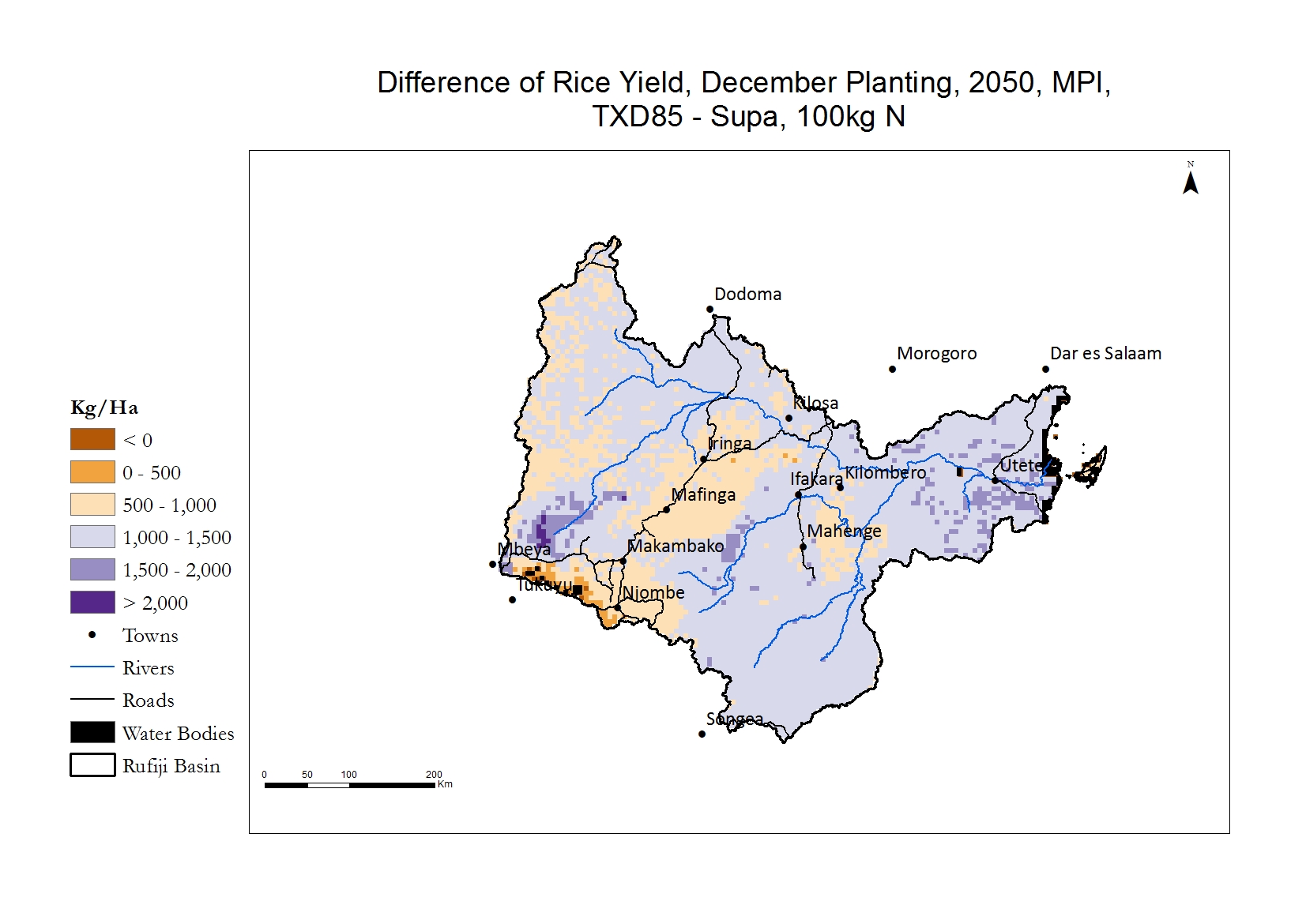
-OK/Ruf_CCSM4-WClim_Supa_Dec.jpg)
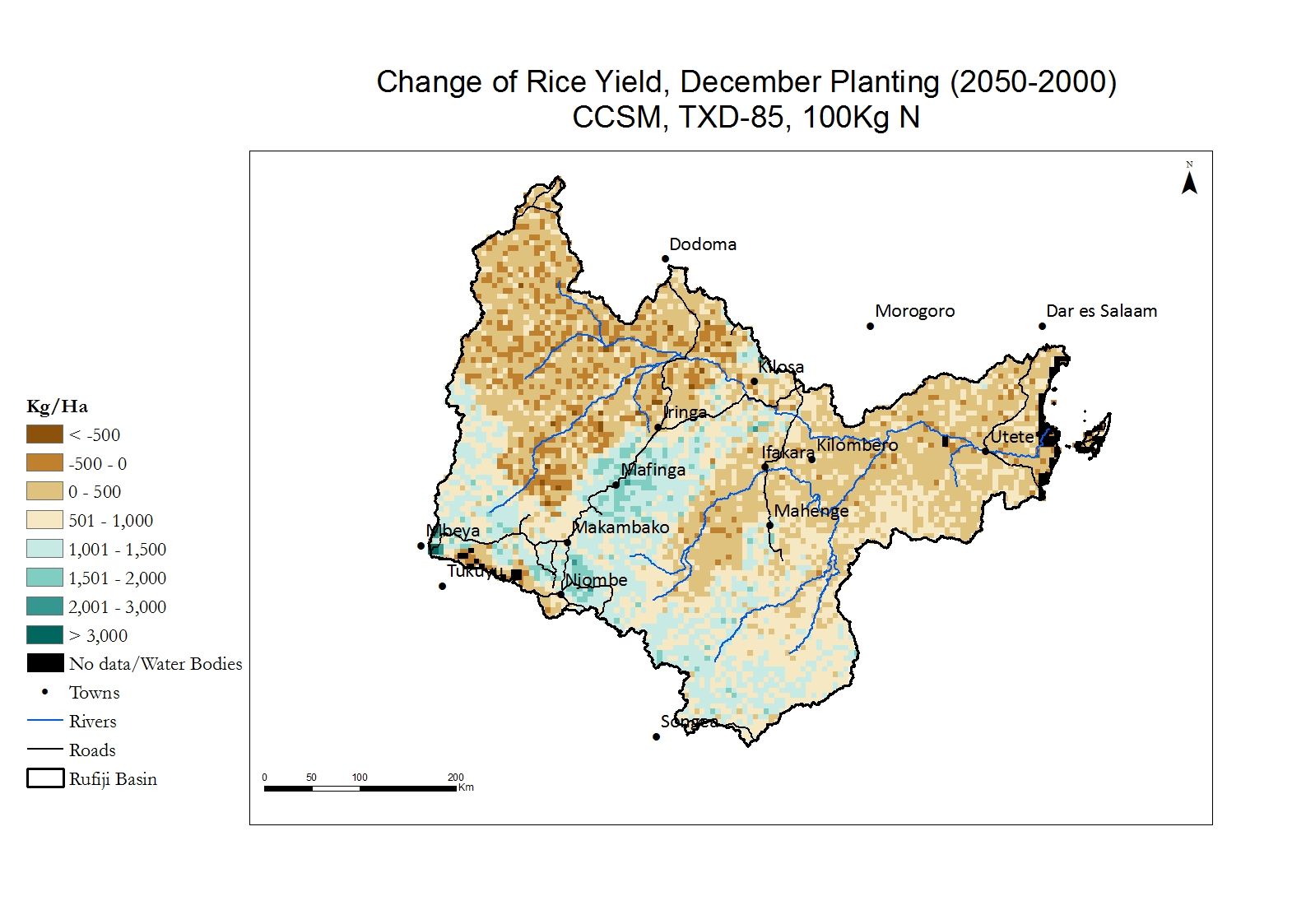
-OK/Ruf_MPI-WClim-Supa_Dec.jpg)




